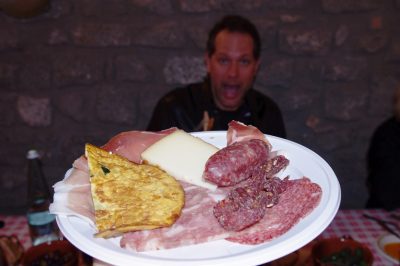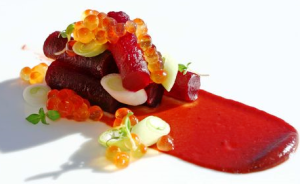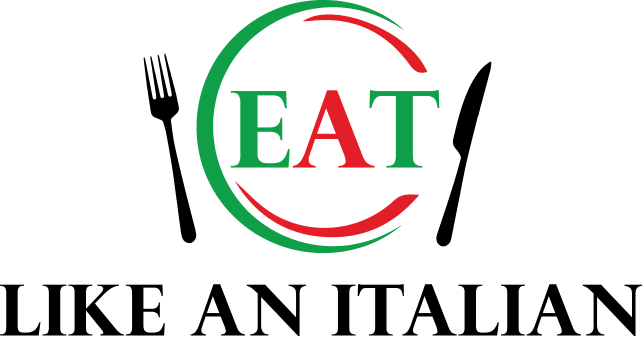
The food culture in Italy… Yes, I admit it, I’m obsessed with it. And not just for the pleasure of it. That’s the main reason, of course, but it also fascinates me as a social phenomenon. I love the way it’s so woven into the daily life and perhaps even programmed into the DNA of every Italian. Whenever someone asks me to write a guest post for a blog, more often than not I gravitate towards discussing food. Admittedly, I’m no expert. But I would suggest that being a learner has its advantages. The joy is in the discovery.
Eat as the Romans do
This week I’ve written a short article on a great blog called “Travel Pizazz,” written by fellow Italo-phile Victoria. In it, I mention a couple of options for a quick, but delicious and healthy meal in Italy. Now, Italians won’t find anything particularly interesting about this concept. But as an American, I’m always amazed and thrilled to be able to eat such good food in such informal settings. In the U.S., we don’t really have this. There’s fast food, of course, which is disgusting. Or else you have restaurants, which are much more expensive but not much better than Burger King or Taco Bell.

Sure, we have high-end restaurants that serve great food if you don’t mind spending a week’s salary on dinner for two. However, even those places are often disappointing when you realize that you’re paying for the “experience” of eating at some “celebrity” chef’s latest fusion cuisine concept. Hungarian-Thai? Why? Asia de Cuba? Do we really need that? The absolute worst are the so-called “molecular gastronomy” places that create atrocities like hot gelatins, salmon roe foam, spherical ravioli, crab ice cream, and olive oil spirals.
Let’s get back to reality…
Food Culture in Italy
While living in Rome I had found that there are several tasty alternatives to restaurants—places where the locals eat and you don’t have to spend an arm and a leg (or as they say in Italian, “un occhio della testa,” an eye of your head) to sample the regional specialties. The options are numerous, but let me introduce you to two of the most common.
For lunch, I’ll often eat at a tavola calda, which literally means “hot table,” but it is more closely related to what we might think of as a cafeteria. Now, I know that you’re probably recalling the institutional food that we were force-fed in grammar school, but let me assure you that this cuisine bears no resemblance to those lamentable meals.
A true Roman tavola calda is more like a huge buffet that nonna (grandma) might serve at an extra-large family function. Everyone grabs a tray and moves down the line. This is helpful if you don’t speak Italian, because all you have to do is point at what you’d like. The prices at these places are normally very reasonable and you don’t feel an obligation to order a full three-course lunch. You can get a simple dish of pasta, a sandwich, a slice of pizza, a salad—there are many options including a bigger meal, if you’re hungry. A glass of house wine normally costs 2 Euros.
The tavola calda that I often go to in Rome is near Piazza della Repubblica and it’s called Caffe delle Terme. It’s good—not the best one in Rome, but it’s close to where I work and the prices are very reasonable. RosticceRì near Piazza Navona is better, but slightly more expensive. My absolute favorite is the Sicilian place Mizzica, but it’s near Piazza Bologna and so not exactly in historical center. Definitely worth a visit if you’re in the area.
In the evening, one of my favorite things to do is to replace the big meal with an aperitivo. The term literally means “to open your appetite,” and it can be an affordable dinner option if you’re eating alone or not in the mood for a big sit-down affair. It’s part snack and part Happy Hour. For Italians, it’s really about taking a little bit of time between the working day and the family dinner to socialize with friends in a festive atmosphere.
Typically, aperitivo begins around 7:00 p.m. and lasts an hour or so. You pay one price and you get a drink of your choice—traditionally a Campari cocktail or a glass of wine—and an assortment of small bites. There are several grades of aperitivo; for example you might have one at your local bar and it will consist of merely a drink, some peanuts, olives, and small finger sandwiches, which will cost about 3-5 Euros. Alternatively, you can go to a fancier restaurant or cocktail lounge in the city center and for 10-15 Euros you’ll get a much more elaborate display of food (un aperitivo rinforzato), including pasta dishes and sliced meats and cheeses.
And YES, there are Rules…
In my effort to rescue the world outside of the Mediterranean from such culinary sacrilege, I’ve compiled my new-found knowledge about the food culture in Italy into a book, appropriately called, “Eat Like an Italian.” The cornerstone of the book is my list of Italian “food rules,” which I also tweet-out via a new Twitter handle, @EatLikeItalians. These are my attempts to distill down this wisdom into bite-sized pieces. (I swear, that just came out, the pun was completely unintentional.) Here are a few recent tweets:
- Rule 2: Any dish—whether a snack or main course—should contain no more than 3 or 4 ingredients, and they should all be clearly visible.
- Rule 6: Dishes like “Veal Florentine” or “Tuscan Chicken Pasta” do not exist. At least not in Tuscany.
- Rule 9: Never throw away bread, but if you must, you should kiss it first. This is more a superstition than a rule, but why invite the malocchio into your kitchen?
- Rule 10: No bacon and eggs for breakfast. Your stomach isn’t ready for such a bombardment just a few minutes after waking. Allow your metabolism to slowly gain momentum throughout the day.
- Rule 19: A Coke can be enjoyed on its own in the middle of the day or as a digestive, but not with your meal. Unless you’re 12 years old—and even then.
- Rule 24: Do not walk (or drive) and drink coffee at the same time. If you don’t have time to enjoy it properly, then just skip it altogether.
And another thing to note is that NOT eating, meaning a “do it yourself fasting” regime, is also part of the Italian diet. Over the centuries, whether for religious reasons or for simple lack of food, Italians have fasted. And they are healthier because of it.
NOTE: The book is no longer available, and instead I’ve compiled my knowledge of the food culture in Italy into a new food blog by the same name, Eat Like an Italian, which not only expands on these rules, but also the rationale behind the Mediterranean Diet.


My favorite dish in the US is Chicken Parmigiana and I quickly realized after living there it doesn’t exist. I’ve talked to so many Italians and laugh over this dish when I tell them. Pollo Parmigiana? What is that! Ha!
Oh yes, and the list goes on… spaghetti and meatballs, lobster fra diavolo, chicken alfredo… too many to count!!
I remember that first picture 😛
That’s right, Marco, we were in Marino! Best lunch I’ve EVER had!
Great job – We love reading your posts!! Keep it coming… bravo!!!
Ciao Patrizia! And thanks so much for all you do for the expats in Rome. What would Tuesdays be without you?!?
We too love Italian food culture and it’s the big reason we keep wanting to return! We rent apartments so we do have the joy of being able to cook some of our meals using local ingredients, how can you help it when you visit the markets? We just love talking to Italian people as we have an immediate simpatico with our love of food and cooking and enjoy sharing our favourite recipes. Thanks for the blog. I have been blogging for over a year and the blog certainly has an Italian leaning…can’t help it!
Thanks Phyllis! Yes, having an apartment let’s you truly “eat like an Italian.” Restaurants are great, but part of the fun is gathering and preparing your own food. It’s healthier to stay connected to what you’re eating, too.
Rome’s cuisine is a little bit fattier than the others in central Italy. It’s peculiar. I personally like having it every now and then, not every day.
Today my wife, who isn’t Italian, has made home-made Pizza. She was so excited because it was easy to prepare, the ingredients are very cheap, and yet it was so good. That made me think once again of what the background of Italian food is: poverty. Think about it: how many “rich” dishes – say, more like French food – can you find in Italy? Not many.
Even when Italy was a very poor country, its people would enjoy good moments with their food, no matter how difficult their life was.
When I was on a mission at the end of the world, it was management politics to bring there top chefs, because in their opinion people working in a harsh environment needed even more good food, for their mood. In other neighboring bases, food politics seemed to be more like “you need just more calories”. That tells a lot about different food culture.
That’s the great thing about the food in Italy; it’s simple, yet there’s still so much variety from region to region. Even after a big meal, you don’t feel stuffed afterwards. Eat slow, drink a bit of wine, and you feel much better. As you say, the “more calories” approach leaves you feeling overfed but undernourished. Thanks for the comments!
I sure do like the looks of the plate of meat and cheese. I wish I knew a place here to find something that looks and satisfies like those I have found in Italy. Actually I must admit, though, that in Rome several of my lunches were not that marvelous. However, I did love the pizza bianca con mortadella panini that I took back to my hotel for lunch several times. Yes I bought it in a supermarcato, but it was oh so good.
Dare I admit that one of my favorite inexpensive dinners in Venice was due tremezzini (sp?) of tonno con cipollini from a near-by bar. I took them back to the hotel and after a delicious glass of prosecco in the hotel bar ate them for dinner in the lounge or my room. It took me four stores here to find the sweet cocktail onions that were in that tuna salad. I make it for myself but miss the prosecco.
Hi Joan! I don’t know if you heard, but last month the US gov’t finally eased the laws regarding the importation of cured meats. So hopefully it won’t be long until those delicious treats find their way to your local deli. But you’re right about the food in Rome–there are too many bad places in the historical center. And Rome isn’t really known to have the best food in Italy. You were smart to go to the supermarket. By the way, there’s no shame in tremezzini. I grab one occasionally, if I know the bar and trust them. (A prosecco to along with it never hurts!)
Rick, you have done it again with another fun/funny and informative article! Since Italian food is my long-time favourite, I enjoyed learning about some of the “no-no” culture of the Italians. In my opinion, many of the things you mentioned make a lot of sense.
I look forward to your next book “Talk like an Italian”. Does that include the hands, as well?
Of course I talk about the hand gestures, Georgia! Without those, Italians would be practically mute! Ciao!